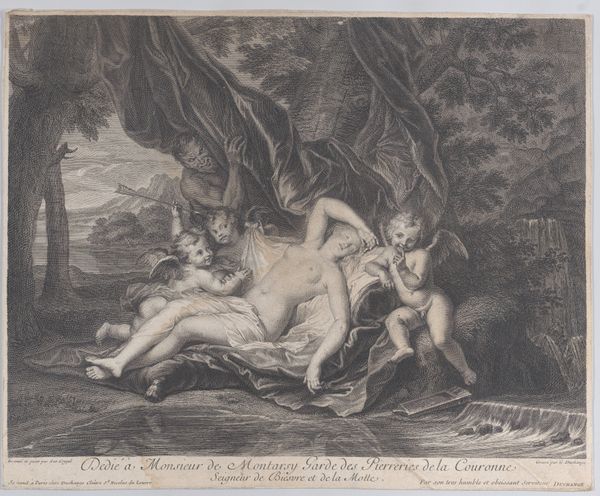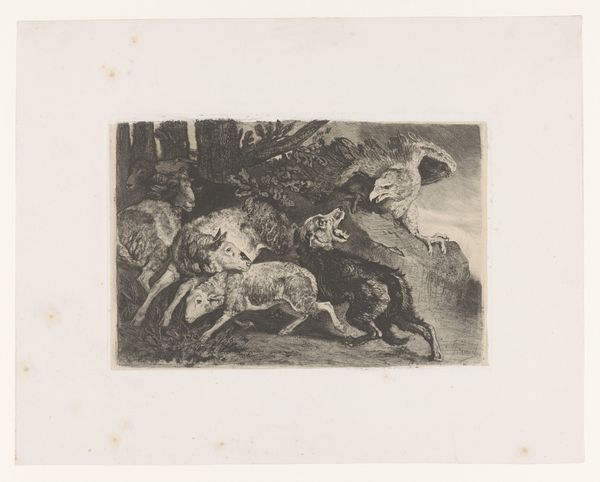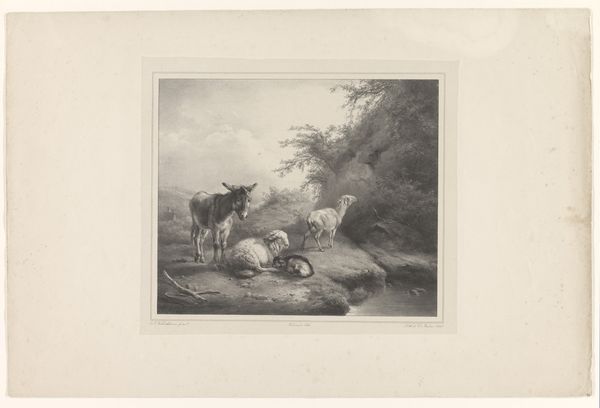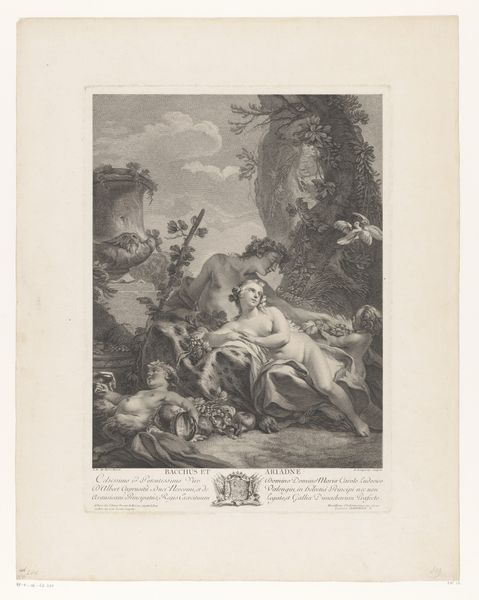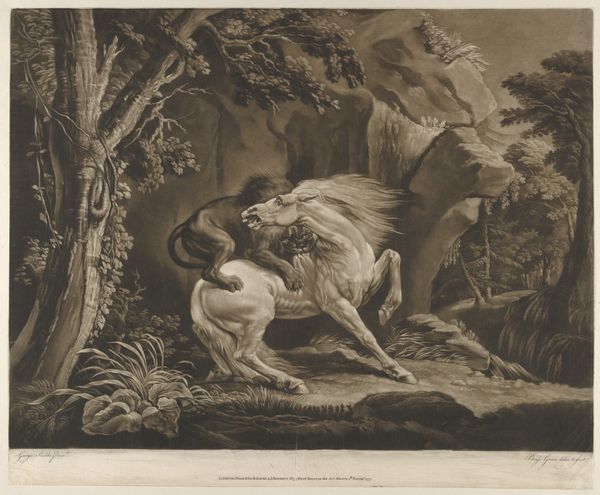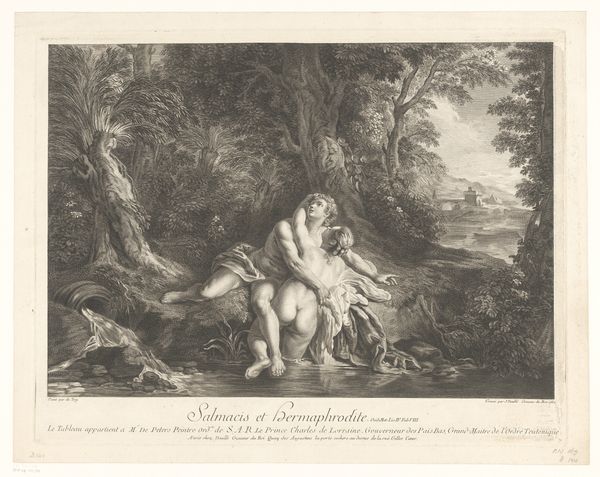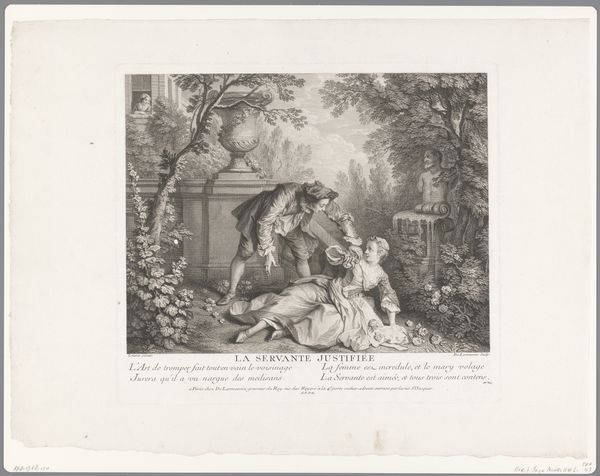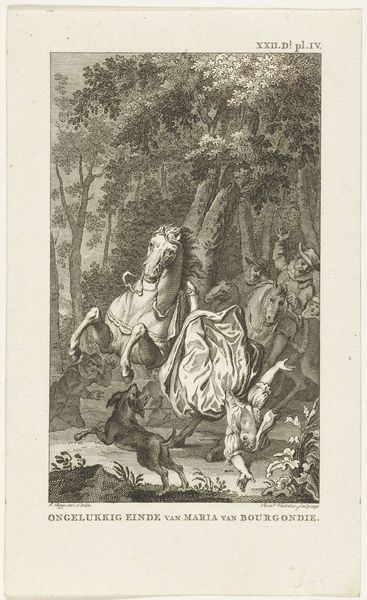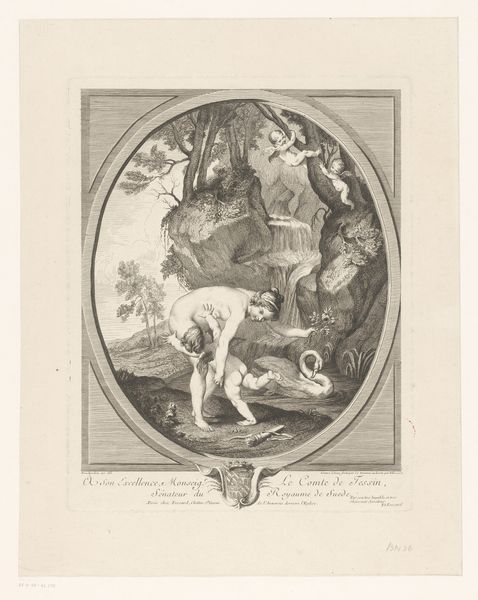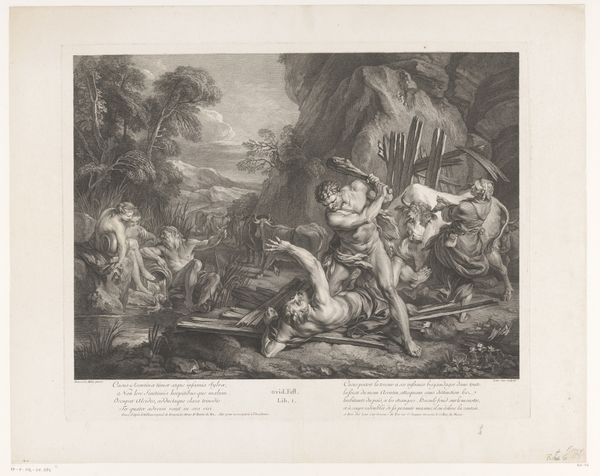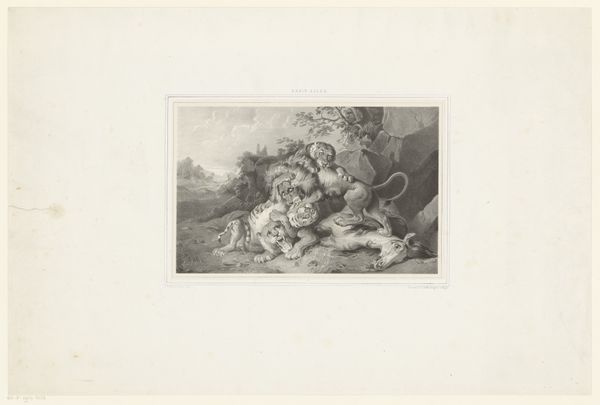
print, engraving
#
allegory
#
baroque
# print
#
old engraving style
#
figuration
#
history-painting
#
nude
#
engraving
Dimensions: height 272 mm, width 340 mm
Copyright: Rijks Museum: Open Domain
Editor: So, we’re looking at "Jupiter en Antiope," an engraving made sometime between 1672 and 1757 by Gaspard Duchange, currently held in the Rijksmuseum. The fine lines create such an ethereal quality. I’m immediately drawn to the contrasting darkness of the forest with the soft, vulnerable figures. What grabs you first? Curator: The narrative. I love that Jupiter is peeking, almost caught in the act – or pre-act, I should say. It's this voyeuristic glance, coupled with the cheeky putti fluttering about, that whispers tales of gods behaving badly…or mischievously? I'm also struck by the use of allegory and symbolism within a history painting context. Do you feel a connection between the artist's hand and the overall drama of the story unfolding here? Editor: It's definitely theatrical, like a scene plucked right from a play. The way the light seems to focus on Antiope does amplify that drama. But beyond the narrative, is there something specific in the engraving technique that you find notable? Curator: The artist's control is really on display here. The variations in line weight aren't just about defining form; they're about mood. The delicate lines caressing Antiope’s skin compared to the bold, assertive strokes defining the forest. Duchange used line to guide our eye through this scene. And it’s this detail which adds the magical atmosphere. I'm curious; do you feel the choice of engraving enhances or detracts from the emotional impact of this scene? Editor: I think it enhances it. The black and white gives it this timeless quality, separating it from everyday life, lending it to a sense of ancient history... or mythology, I suppose. I never thought of an engraving having this power. Curator: It's a world created through careful strokes and dark humour, all meant to titillate and make us question what the human – or godly – condition really is! It also shows how historical themes persist throughout art history. Editor: I will look differently at engravings from now on. Thank you. Curator: My pleasure; it’s these details that breathe life into artwork.
Comments
No comments
Be the first to comment and join the conversation on the ultimate creative platform.
